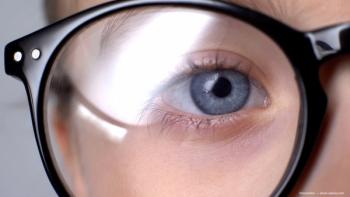
IOL centration stable 30 days after implantation, study confirms
Ophthalmologists spend significant amounts of time during cataract surgery trying to precisely center an implanted IOL to achieve the best possible vision after surgery. The high success rate of cataract surgery suggests that in most cases, they succeed.
Florence Cabot, MDOphthalmologists spend significant amounts of time during cataract surgery trying to precisely center an implanted IOL to achieve the best possible vision after surgery. The high success rate of cataract surgery suggests that in most cases, they succeed.
But there have been long-nagging questions about IOL movement within the capsular bag after cataract surgery. Some data suggest that IOLs may shift position by 500 µm or more following surgery–a sufficient drift to degrade vision. However, results from what may be the largest study of IOL stability in the 30 days following implantation suggest that once implanted, IOLs tend to remain within 200 to 300 µm of the original position.
“We found that the center of both monofocal IOLs and toric IOLs is essentially unchanged from day 1 after cataract surgery to 30 days after surgery,” said Florence Cabot, MD, senior research associate, Bascom Palmer Eye Institute, University of Miami. “Furthermore, we did not see any difference in IOL centration between manual cataract surgery and femtosecond laser procedures between day 1 and 30 days postop.”
Day 1, day 30 data
Researchers measured the centration of 59 eyes in 49 patients day 1 after surgery and 1 month after surgery using iTrace Ray Tracing technology. IOL centration was measured relative to 3 distinct landmarks–the center of the pupil, the center of the limbus, and the corneal apex.
Figure 1. iTrace scan of the IOL centration.
A total of 45 eyes received a monofocal IOL and 14 eyes received a toric IOL. Just over half of the surgeries (32) were performed using traditional techniques and 27 were performed using femtosecond laser assisted cataract surgery (FLACS).
The final results were similar for both monofocal and toric IOLs, as well as for conventional and FLACS procedures, Dr. Cabot reported. For lenses implanted using conventional techniques, there was a mean supero-nasal shift of 293.80 µm relative to the pupil center and no trend relative to the limbus center or to the corneal apex. For FLACS procedures, there was a mean infero-temporal shift of 218.75 µm and no trend relative to the limbus center or the corneal apex.
Figure 2. FLACS infero-temporal IOL shift relative to pupil center: IOL shift between POD #1 and POM #1 relative to pupil center (A), limbus center (B), and vertex (C).
The findings are important in two areas, Dr. Cabot said. First, it should be reassuring to both surgeons and to patients that while there is a shift in IOL centration between day 1 and 1 month after surgery, the shift is small–200 to 300 µm. And while the shift can be measured reliably, it is unlikely to have any clinical effect on visual acuity or on patient satisfaction with the procedure and its outcome.
Reassuring data
The findings should also be reassuring for surgeons in that both dominant technologies–conventional cataract surgery and FLACS–produce similar centration results whether the patient receives a monofocal IOL or a toric IOL. With either procedure, the shift in centration over the 30 days following surgery is detectable using ray-tracing technology, but the shift appears to be small and not clinically significant.
“There has been some concern about the optimization of cataract surgery for multifocal IOLs somehow requiring the use of a femtosecond laser system,” Dr. Cabot explained. “We did not see any clinically significant difference in results from day 1 to day 30 in lens centration from using FLACS compared to conventional cataract surgery or between monofocal and toric IOLs. We would all like to see further studies to confirm these results with multifocal IOLs.”
Figure 3. Traditional cataract surgery supero-nasal IOL shift relative to pupil center: IOL shift between POD #1 and POM #1 relative to pupil center (A), limbus center (B), and vertex (C).Ray-tracing technology has obvious limitations, she continued. That suggests using other technologies, such as high-resolution optical coherence tomography (OCT) or a Scheimpflug camera, such as the Pentacam, to confirm the results with a richer data set.
It would also be helpful to add a third data collection point immediately after surgery. Ophthalmologists typically spend a few minutes positioning IOLs and, in the case of toric lenses, rotating the IOLs for optimal visual effect. It is widely recognized that the capsular bag may contract asymmetrically in some individuals, but little is known about why or when that contraction occurs.
The single largest unknown may be positioning changes that take place in the hours immediately following surgery. Dr. Cabot said that adding an intraoperative evaluation of IOL centration could help ophthalmologists evaluate the effect of early changes compared to day 1, 30 days, and possibly longer after surgery.
Florence Cabot, MD
Dr. Cabot thanked her co-investigators on the study: Adbul-Hadi Kaakour, MS; Matthew Donovan, BS; Carolina de Freitas, MS; Nilufer Yesilirmak, MD; Vasilios Diakonis, Bilian Ke, MD; Sonia H. Yoo, MD; and Anat Galor, MD.
This article is adapted from Dr. Cabot’s presentation at the 2015 American Society of Cataract and refractive Surgery meeting.
Newsletter
Don’t miss out—get Ophthalmology Times updates on the latest clinical advancements and expert interviews, straight to your inbox.



















































.png)


